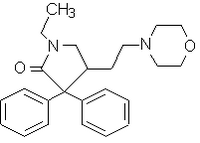Definition
Hemoglobin is a protein inside red blood cells that carries oxygen. A hemoglobin test reveals how much hemoglobin is in a person's blood. This information can be used to help physician's diagnose and monitor anemia and polycythemia vera, a condition in which the bone marrow produces too many blood cells.
Purpose
A hemoglobin test is performed to determine the amount of hemoglobin in a person's red blood cells (RBCs). This is important because the amount of oxygen available to tissues depends upon how much oxyhemoglobin is in the RBCs, and local perfusion of the tissues. Without sufficient hemoglobin, the tissues lack oxygen and the heart and lungs must work harder to compensate.
A low hemoglobin measurement usually means the person has anemia. Anemia results from a decrease in the number, size, or function of RBCs. Common causes include excessive bleeding, a deficiency of iron, vitamin B12, or folic acid, destruction of red cells by antibodies or mechanical trauma, and structurally abnormal hemoglobin. Hemoglobin levels are also decreased due to cancer, kidney diseases, and excessive IV fluids. An elevated hemoglobin may be caused by dehydration, hypoxia, or polycythemia vera. Hypoxia may result from high altitudes, chronic obstructive lung diseases, and congestive heart failure. Hemoglobin levels are also used to determine if a person needs a blood transfusion. Usually a person's hemoglobin must be below 8 g/dL before a transfusion is considered. The hemoglobin concentration is also used to determine how many units of packed red blood cells should be transfused. A common rule of thumb is that each unit of red cells should increase the hemoglobin by approximately 1.5 g/dL.
Precautions
Fluid volume in the blood affects hemoglobin values. Accordingly, the blood sample should not be taken from an arm receiving IV fluid. It should also be noted that pregnant women and people with cirrhosis have extra fluid, which dilutes the blood, decreasing the hemoglobin. Dehydration concentrates the blood, which may cause an increased hemoglobin result.
Certain drugs such as antibiotics, aspirin, antineoplastic drugs, doxapram, indomethacin, sulfonamides, primaquine, rifampin, and trimethadione, may also decrease the hemoglobin level.
A nurse or phlebotomist usually collects the sample by venipuncture or fingerstick following standard precautions for the prevention of transmission of bloodborne pathogens.
Description
Hemoglobin is a complex protein composed of four subunits. Each subunit consists of a polypeptide chain that enfolds a heme group. Each heme contains iron (Fe2+) which can bind a molecule of oxygen. The iron gives blood its red color. After the first year of life, 95-97% of the hemoglobin molecules contain two pairs of polypeptide chains designated alpha and beta. This form of hemoglobin is called hemoglobin A.
Hemoblogin is most commonly measured by the cyanmethemoblogin method. Whole blood is mixed with a buffered solution of potassium ferricyanide and potassium cyanide. The potassium ferricyanide oxidizes the heme iron forming methemoglobin (Fe3+). This reacts with potassium cyanide forming cyanmethemoglobin which is orange-red. The absorbance of the solution measured at 540 nm is proportional to the hemoglobin concentration. Hemoglobin is most often performed as part of a complete blood count (CBC), a test that includes counts of the red blood cells, white blood cells, and platelets (thrombocytes).
Some people inherit hemoglobin with an abnormal structure. The abnormal hemoglobin results from a point mutation in one or both genes that code for the alpha or beta polypeptide chains. Examples of abnormal hemoglobins resulting from a single amino acid substitution in the beta chain are sickle cell and hemoglobin C disease. Most abnormal hemoglobin molecules can be detected by hemoglobin electrophoresis. This procedure separates hemoglobin molecules with different net charges.
Preparation
No special preparation is required. Blood is collected by venipuncture in a tube containing EDTA anticoagulant after disinfecting the puncture site.
Aftercare
Discomfort or bruising may occur at the puncture site. Pressure to the puncture site until the bleeding stops reduces bruising; warm packs relieve discomfort. Some people feel dizzy or faint after blood has been drawn and should be treated accordingly.
Complications
Other than potential bruising at the puncture site, and/or dizziness, there are no complications associated with this test.
Results
Normal values vary with age and sex, with women generally having lower hemoglobin values than men. Normal results for men range from 13.6-17.2 g/dL. For women the normal range is 12-15 g/dL. Critical limits (panic values) for both males and females are below 5.0 g/dL or above 20.0 g/dL.
A low hemoglobin value usually indicates the person has anemia. Further tests are done to discover the cause and type of anemia. Dangerously low hemoglobin levels put a person at risk of a heart attack, congestive heart failure, or stroke. A high hemoglobin value indicates the body is making too many red cells. Further tests are performed to differentiate the cause.
Health care team roles
Laboratory scientists perform hemoglobin tests using automated laboratory equipment. Critically high or low levels should be immediately called to the attention of the patient's nurse or doctor. Nurses should bring high or low hemoglobin levels to the attention of the patient's physician, and should also report any signs and symptoms that could be associated with an abnormal hemoglobin: medications, excessive thirst, tachycardia, low blood pressure, weakness, etc.
Key Terms
- Anemia
- A diminished oxygen carrying capacity caused by a decrease in the size, number, or function of red blood cells.
- Hemoglobin
- A protein inside red blood cells that carries oxygen to body tissues.
- Polycythemia vera
- A disease in which the bone marrow makes too many blood cells.



